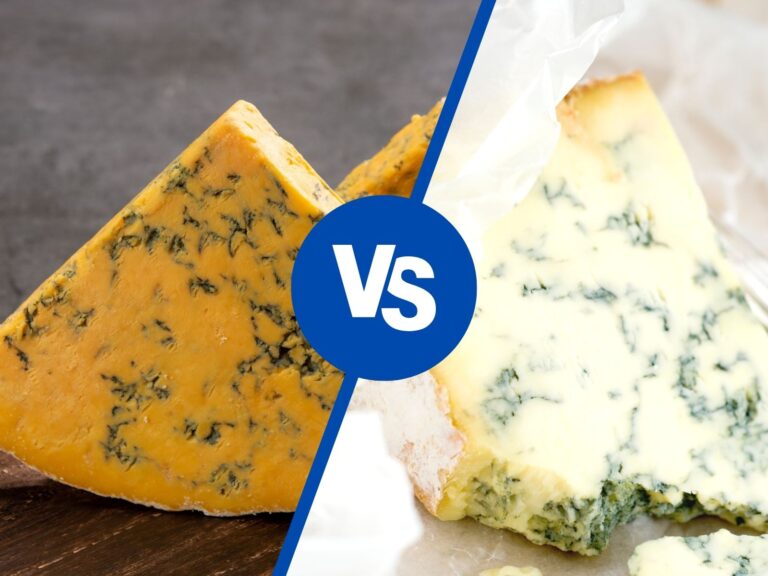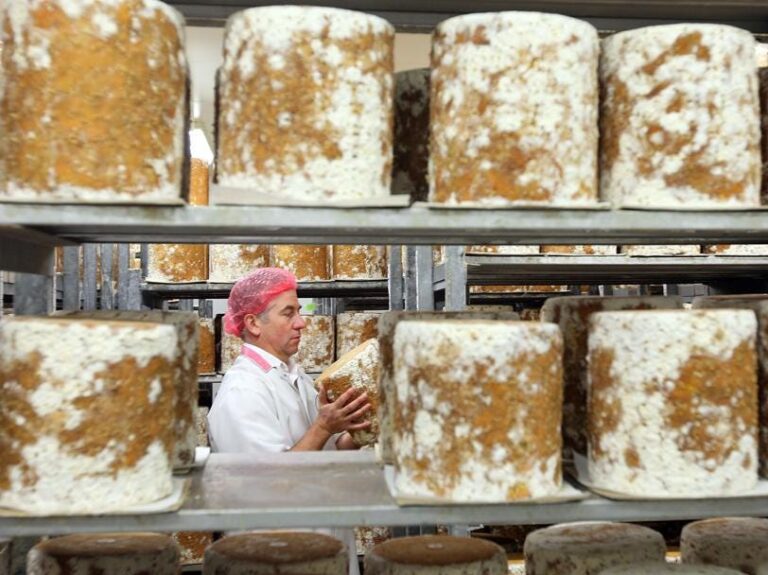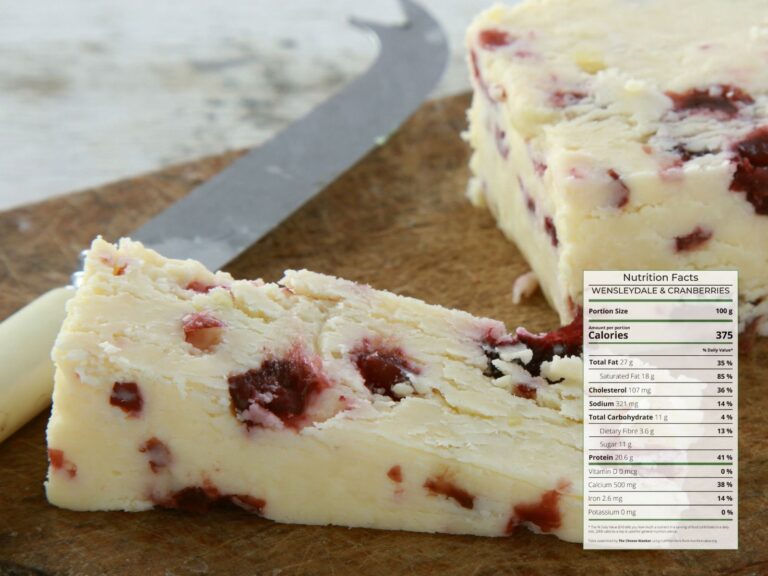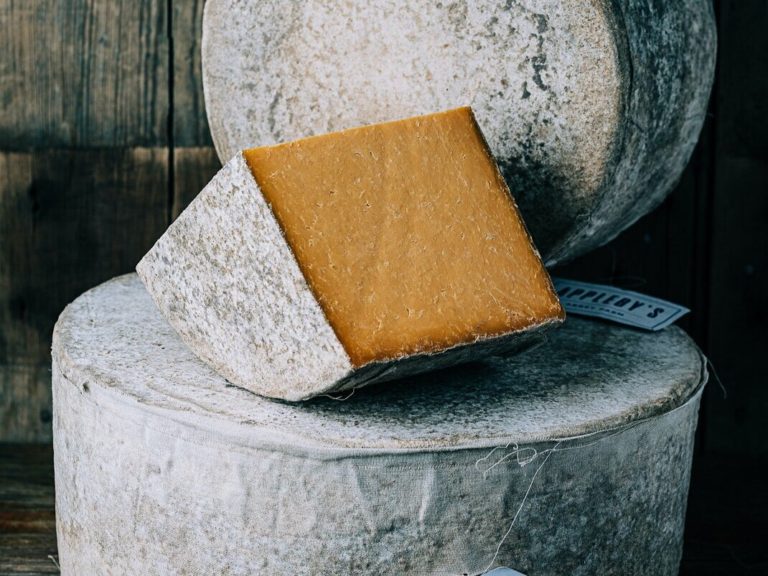Cheese lovers worldwide will agree that the United Kingdom is renowned for its pressed territorial cheeses. From the savoury tang of Cheddar to the flaky, grassy flavour of Cheshire, British cheese is a versatile and beloved food. In this post, we will be talking about Wensleydale and cover its unique history and flavour profile. And, yes, this cheese did exist before Wallace & Gromit.
SEE ALSO: The amazing British raw milk cheeses that are now being exported worldwide →
What is Wensleydale?
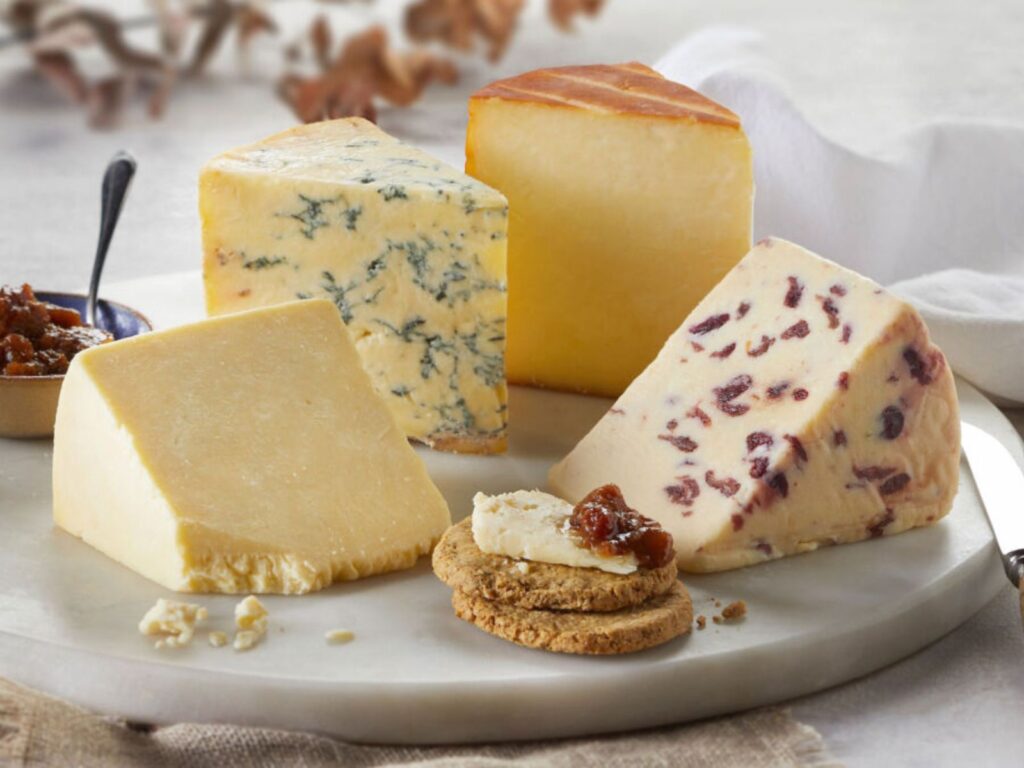
Wensleydale is a cow’s milk cheese that has a crumbly texture and a slightly sweet, tangy flavour. It is made from whole milk and is typically aged for three to six months. The cheese is white in colour and has a moist, open texture. While the name Wensleydale is not protected, the British PDO does regulate the production of Yorkshire Wensleydale.
Currently, Yorkshire Creamery produce a range of different cheeses under the PDO stamp. Moreover, this British territorial comes in a range of flavoured varieties which might just be more popular than the original recipe. We’ll get back to that a little bit later.
The History of Wensleydale
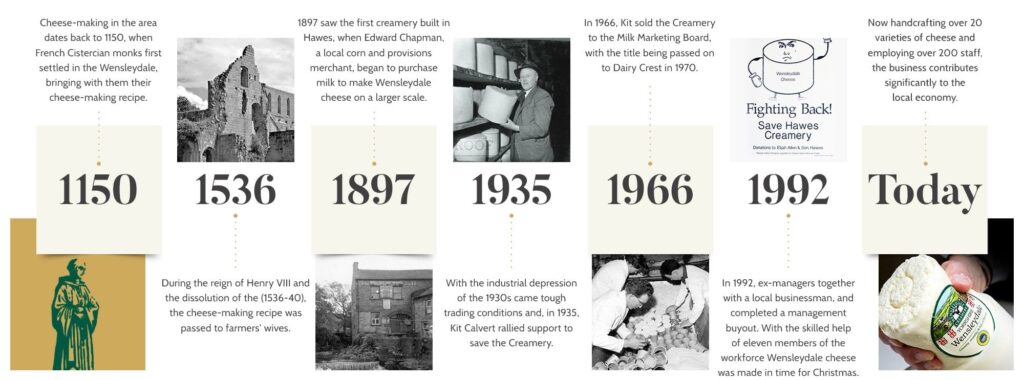
Wensleydale cheese has been produced in the northern region of England for hundreds of years. Let’s take a look at the major events that have taken place over the better part of a millenium.
Geography
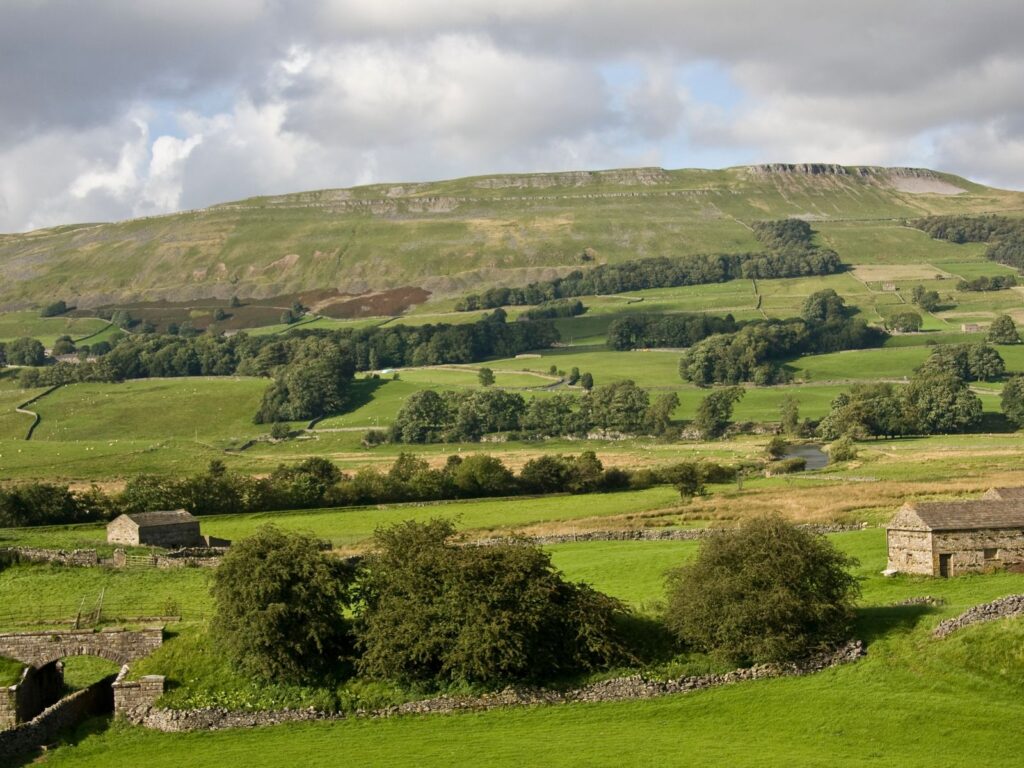
Unsurprisingly, Wensleydale cheese gets its name from the region where it is produced, Wensleydale, in North Yorkshire, England. The region is known for its lush pastures and rolling hills, which provide the perfect environment for dairy farming.
1150 – Cistercian monks
The cheese was originally made by Cistercian monks who settled in the region. Indeed, the earliest records of cheesemaking in Wensleydale appear in 1150. At the time, French Cistercian monks first settled in the region and brought with them their cheesemaking recipes.
1536 – Dissolution of the monasteries
During the reign of Henry VIII, the dissolution of the monasteries took place. As a result, cheesemaking was passed on from monks to farmers’ wives in the mid 16th century. But this beloved British cheese would change forever in the late 19th century.
1897 – First creamery in Hawes
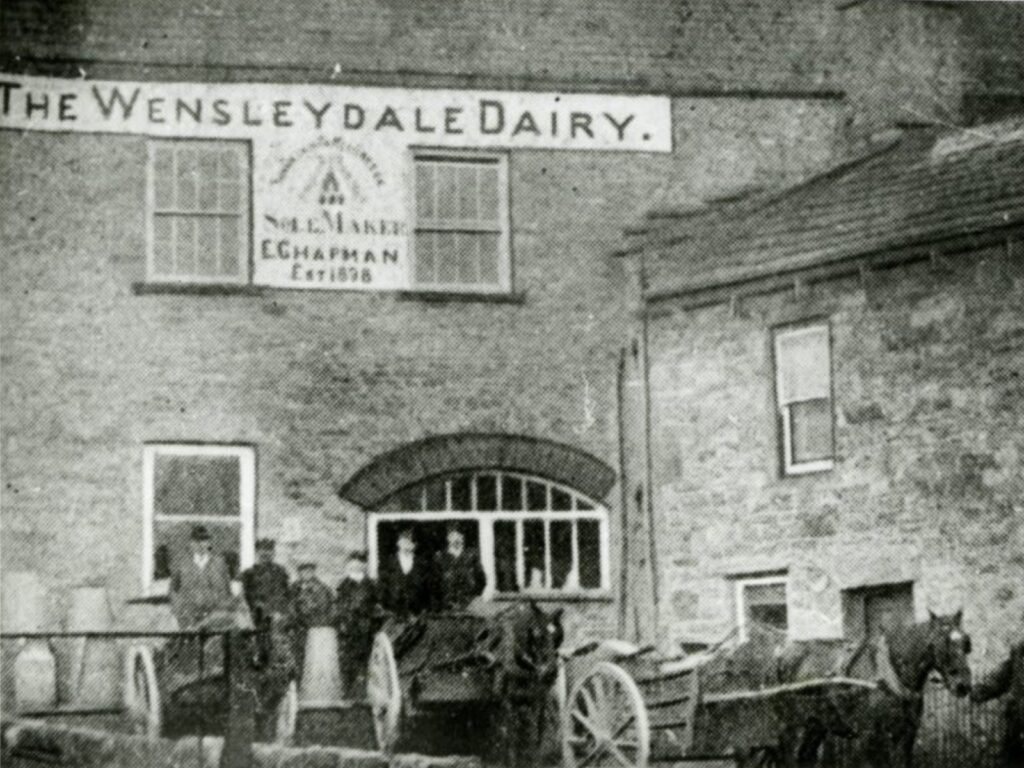
In 1897, a local corn merchant called Edward Chapman built the first creamery in Hawes. Very soon, he began to purchase local milk to make Wensleydale cheese on a larger scale.
1935 – Kit Calvert

However, with the industrial depression of the 1930s came some significantly restrictive trading conditions. And, in 1935, a local farmer called Kit Calvert stepped in to save the creamery.
1966 – The Milk Marketing Board
In 1966, while England was hosting (and winning) the World Cup, Kit Calvert sold the Wensleydale Creamery to the Milk Marketing Board. As a result, the company experienced good stability and growth for the better part of three decades.
1992 – Failed move to Lancashire
Unfortunately, the creamery hit trouble again in 1992 when Dairy Crest, a subsidiary of the Milk Marketing Board, decided to close the Hawes plant and transfer production to Lancashire. As you can imagine, moving the production of this iconic British territorial to the wrong side of the border was not a popular move!
In 1992, ex-managers banded together with several local businessmen to complete a buyout of the creamery. And they ensured that production of Wensleydale remained in Wensleydale.
2022 – A global business
Fast-forward to 2022 and the Wensleydale Creamery now crafts over 20 different varieties of cheese and employs over 200 staff. Overall, the business contributes significantly to the local economy.
Presently, it turns over around £26m a year and is enjoying the spoils of a rapidly growing export market, which makes up about 14 per cent of its retail sale and includes outlets in Canada, the Far East, New Zealand, Australia and the US.
Wallace & Gromit fame
If you’re a fan of the animated series Wallace and Gromit, then you’ll be familiar with Wensleydale cheese. The beloved cheese plays a prominent role in the show, and its popularity has definitely increased since the show’s debut.
Indeed, sales of Wensleydale had reached an all-time low in the mid 1990’s when the producers of the show decided to give it a mention as one of Wallace’s favourites. The reason they chose Wensleydale was because they like the way Wallace’s lips moved when pronouncing it. Nevertheless, this sparked a certain curiosity in the public and sales started rebounding.
In addition to this, a feature-length version of the show called “The Curse of the Were-Rabbit” debuted in the cinemas in 2005. As a result, sales of Wensleydale cheeses increased by 23%!
How is Wensleydale made?
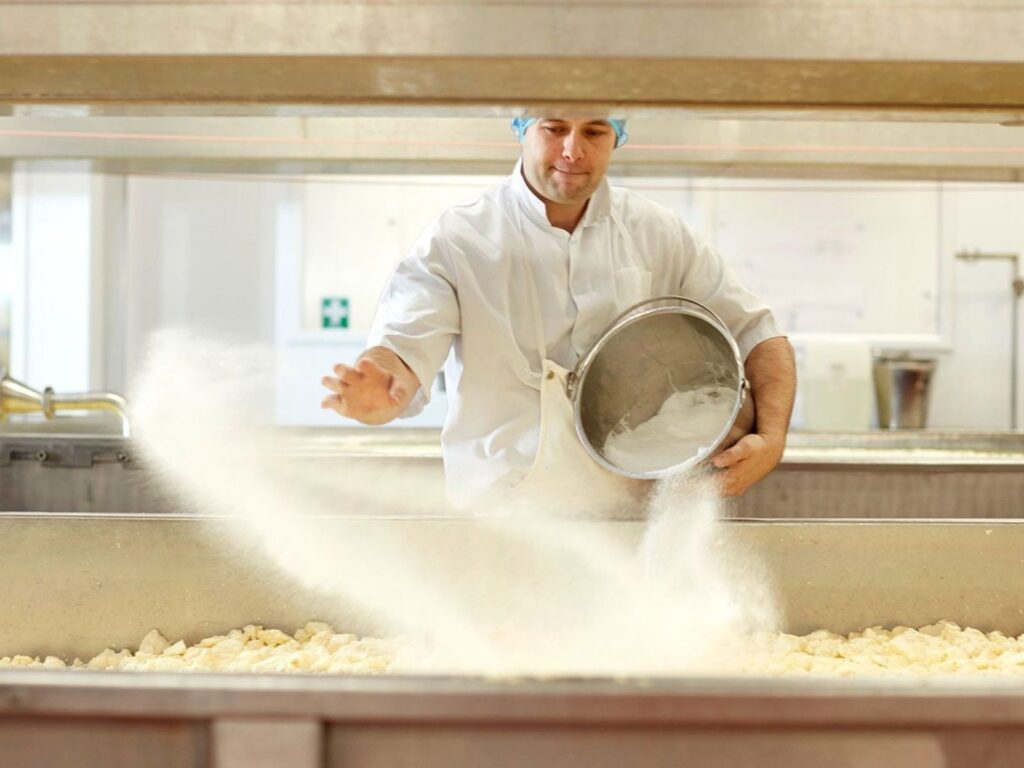
Wensleydale cheese is made using traditional cheesemaking techniques.
Yorkshire milk
Of course, it all begins with fresh milk brought in daily from around 45 local farms, each providing somewhere in the region of 1,500 litres. This is then mixed in vats with rennet and a starter culture (made daily) until it reaches a precise level of acidity, depending on what cheese is being made. Finally, the cheesemaker adds salt.
Cutting the curd
While all this is going on, the milk goes through a magical array of texture transformations. First, it partly solidifies into a pleasantly wobbly white curd. Once this happens, the maker separates the curds and whey by using giant circling paddles. At this stage, they also inject steam to scald the curd.
When they have drained all of the whey, they proceed to cut the scalded curd into large rectangles (like cheesy breeze blocks), which are turned over at regular intervals.
Salting by hand
Once the salt has been thrown in by hand, the blocks are rapidly sliced into smaller chunks with large knives. The final step in producing Wensleydale cheese involves transferring the curd chunks into moulds to shape the cheese.
Maturation
Wensleydale cheese is typically aged for three to four months, although some varieties may be aged for longer. During the aging process, the cheese develops its characteristic crumbly texture and slightly sweet, tangy flavour. Moreover, the cheese is traditionally aged on wooden shelves, which allows it to breathe and develop its flavour profile.
As the cheese ages, it becomes drier and crumblier, and its flavour becomes more intense. Some varieties, such as Special Reserve Yorkshire Wensleydale, age for longer periods of up to six months. As a result, this cheese develops a harder texture and deeper, more mature flavour.
Different types of Wensleydale
As we mentioned earlier, the Wensleydale Creamery currently produces over 20 different varieties of this cheese. Let’s have a look at the more important ones.
Yorkshire Wensleydale
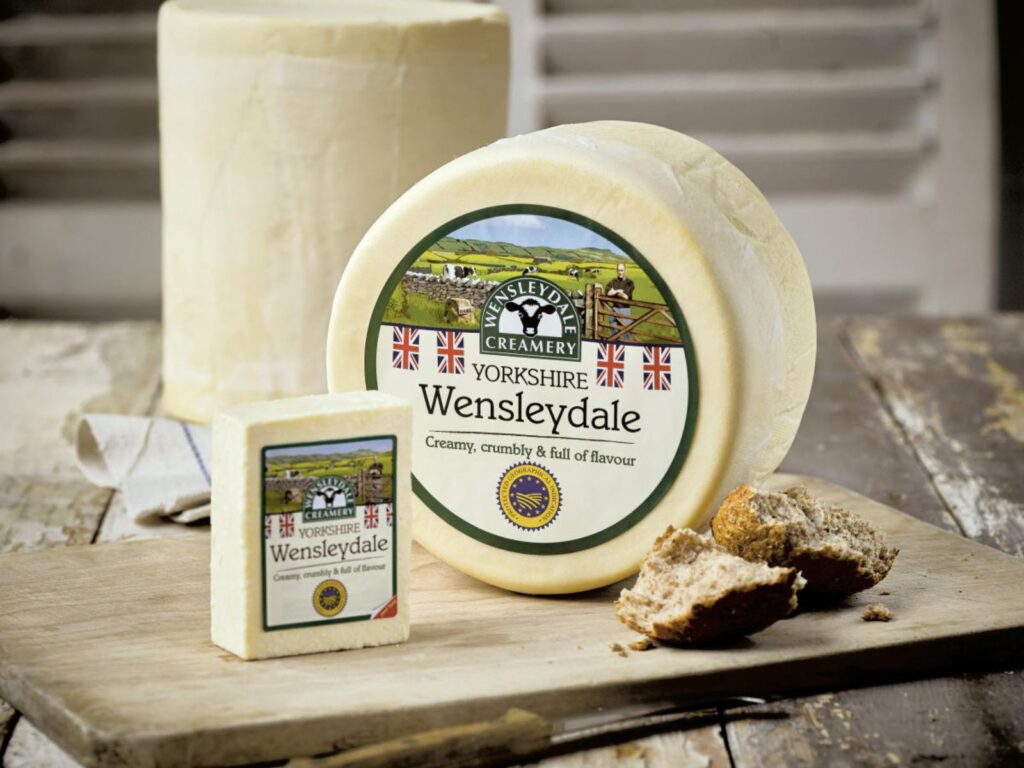
Without a doubt, this is the creamery’s signature Wensleydale. Indeed, their master cheesemakers handcraft this variety using a time-honoured recipe and only local milk.
Kit Calvert Old-Style Wensleydale
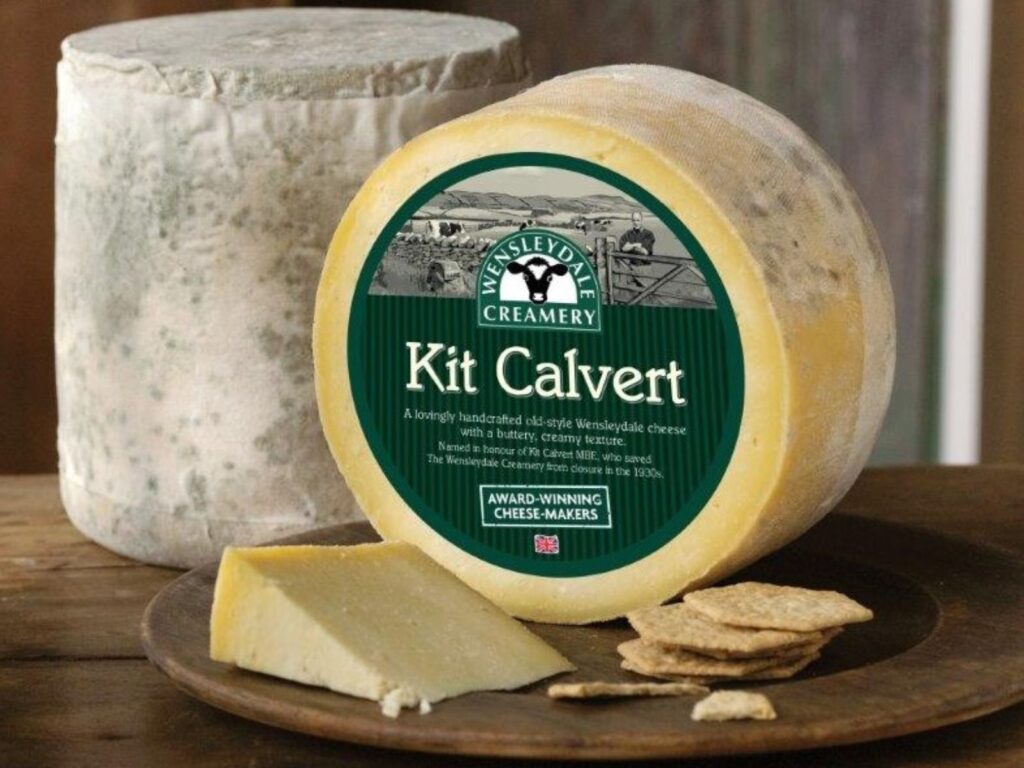
As you’ve probably guessed, this cheese was created and named in celebration and honour of Kit Calvert MBE. As we mentioned earlier, this legendary Yorkshire businessman played a key role in saving the Wensleydale Creamery from closure in the 1930s.
This lovingly handcrafted cheese boasts a buttery, especially creamy texture that sets it apart from other varieties. The artisans who make this cheese take great care to ensure that every batch is crafted to perfection, resulting in a truly exceptional product that honours the rich history and heritage of Wensleydale cheese.
Wensleydale Blue
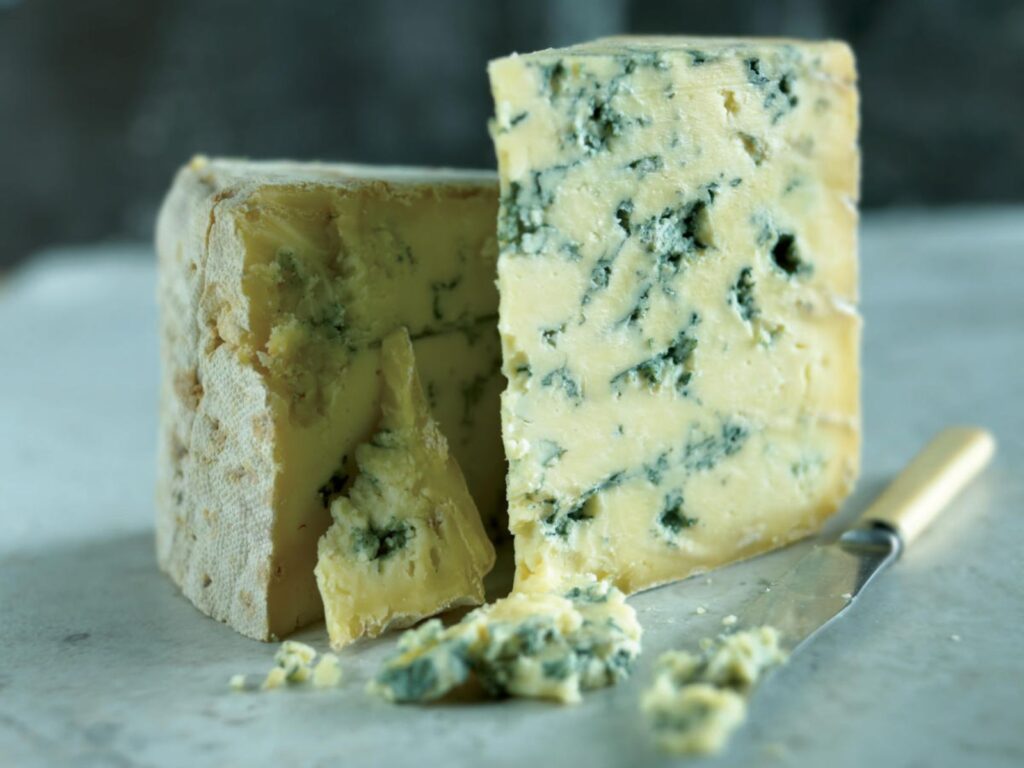
Among their range at Wensleydale Creamery, you will find a creamy blue cheese with a delicate mellow, yet full flavour. In many ways, this blue cheese represents the original, matured Wensleydale cheese that was made throughout Wensleydale by the Cistercian monks.
Due to the conditions under which it was made and stored, the cheese would have naturally ‘blued’.
Oak Smoked Yorkshire Wensleydale

This smoked pressed cheese starts its life as the company’s signature Yorkshire Wensleydale. Once they have formed the cheese, the maker naturally smokes each truckle over oak chips for 18 hours. As a result, this cheese develops a subtle smoked flavour.
Wallace & Gromit Wensleydale

This limited-edition version of Wensleydale is actually hand-selected from their best batches of Yorkshire Wensleydale. To make this cheese, Wensleydale Creamery actually coat each young truckle of cheese with a green wax rind.
Flavoured Wensleydale
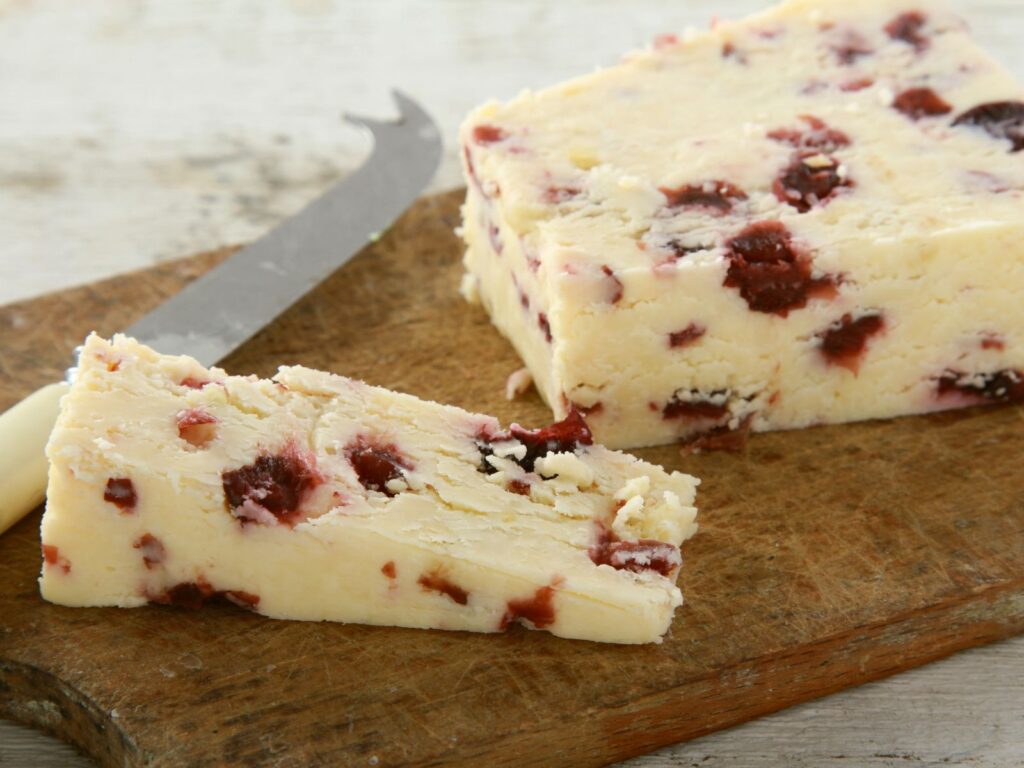
Finally, we have the most popular versions of this cheese. Indeed, the creamery make a range of cheeses that are augmented with natural flavours. Some crowd-favourites include Wensleydale with Cranberries, Wensleydale with Mangon & Ginger and Wensleydale with Apricots.
Storing Wensleydale
Once you have brought your cheese home, you should wrap it in wax or parchment paper and store it in the fridge. Ideally, you will want to keep it in an airtight container to avoid drying it out.
While the vegetable drawer in your refrigerator is a decent option, we prefer to use a tight reusable plastic container lined with a damp paper towel. Indeed, this storage option will give you a bit more control over the humidity conditions and also reduce the risk of cross-contamination with other cheeses and foods.
Serving guide for Wensleydale
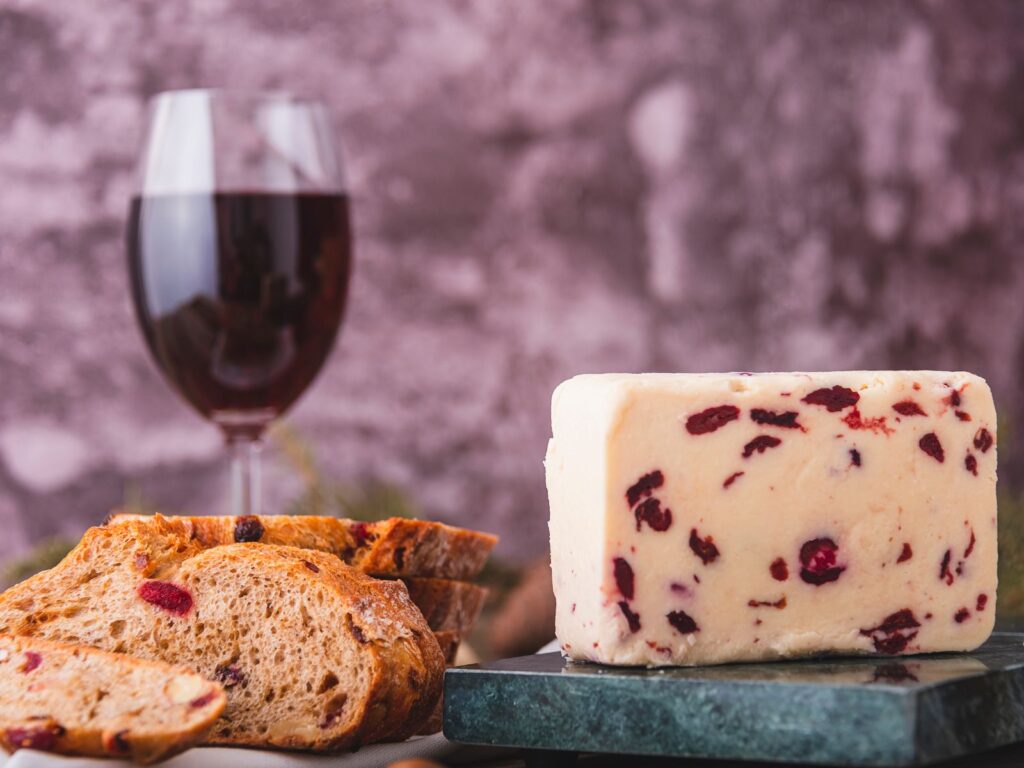
Wensleydale cheese can be served in a variety of ways. It pairs well with fruit and nuts, and can be used in sandwiches, salads, and other dishes. It can also be served on a cheese board alongside other types of cheese.
But one of our favourite ways to enjoy Wensleydale cheese is in a classic Grilled Cheese Sandwich. Simply layer slices of Wensleydale cheese between two slices of bread, butter the outside of the bread, and grill until the cheese is melted and the bread is crispy.
Another delicious way to enjoy this cheese is in a savoury tart, where it pairs perfectly with caramelised onions and fresh herbs.
Alternatives to Wensleydale
If you’re looking for an alternative to Wensleydale cheese, there are a few options to consider.
Cheshire
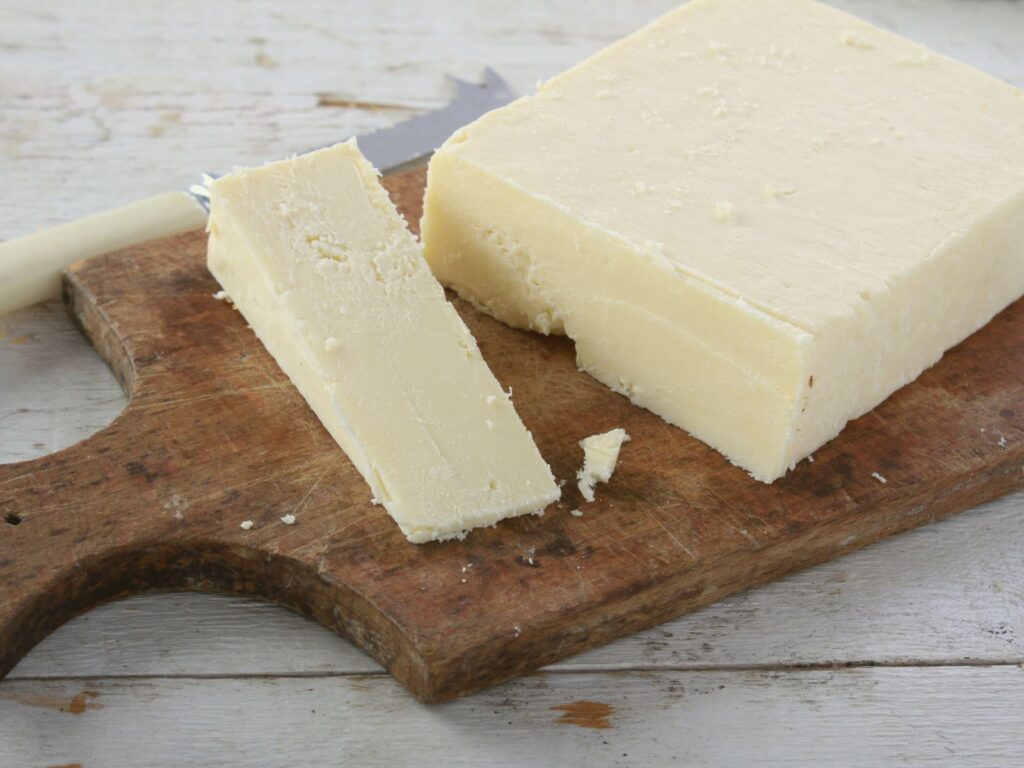
Cheshire is a dense and crumbly British territorial cheese that comes from Cheshire and four neighbouring counties. Appleby’s Cheshire is currently the only raw milk, clothbound farmhouse Cheshire still in production in Britain. Using the milk of their small herd of Friesian cows, the Applebys make both a white Cheshire and their signature orange Cheshire.
The ageing process for their cheese lasts between six weeks to 10 months, depending on the size of the wheel. A mature Appleby’s Cheshire is firm, yet moist and flaky. Overall, the cheese shows rich and mineral flavours with savoury notes of grass. We recommend pairing this beautiful cheese with a glass of local dark ale.
Double Gloucester
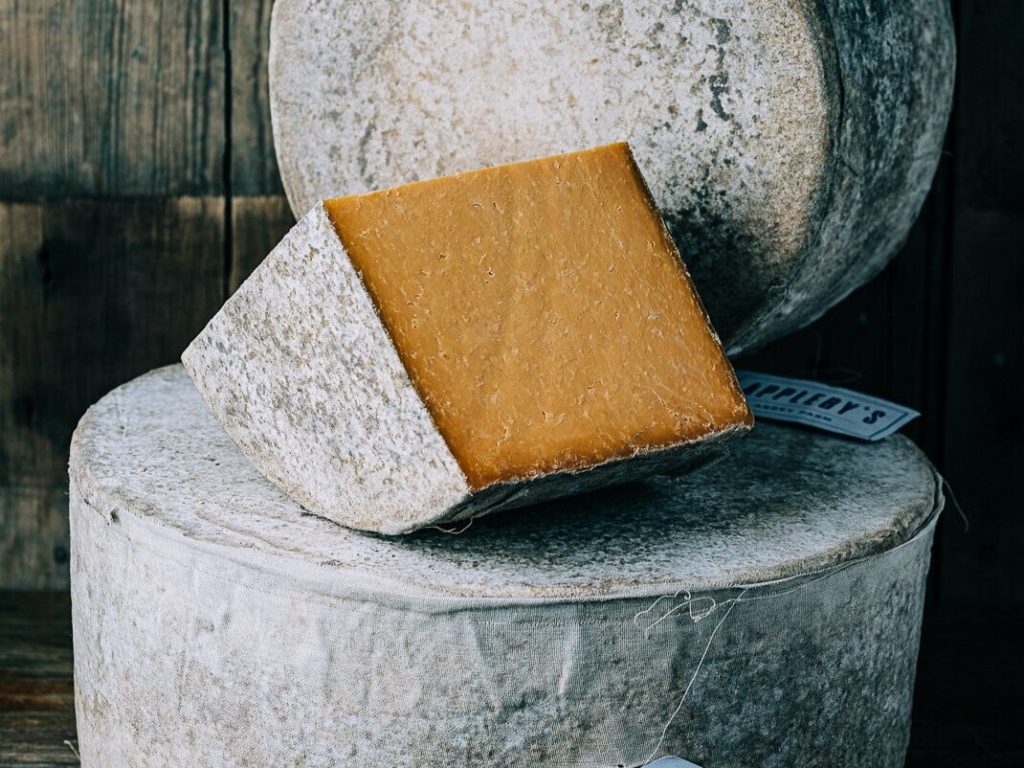
Gloucester is a traditional pressed uncooked cheese that finds its roots in the Gloucestershire in the 16th century. Single Gloucester is made from partly skimmed milk whereas Double Gloucester uses whole fat milk taken from both morning and evening milking.
At eight weeks, Double Gloucester develops a firm but moist texture. Its flavours are reminiscent of warm buttered toast with subtle notes of minerals and salt. Also, watch out for a long, tangy finish.
This British territorial pairs beautifully with light-bodied reds such as Pinot Noir and Zinfandel or even a white like Sancerre. If you prefer pairing with beer, this raw milk beauty matches well with a number of local ales.
Lancashire
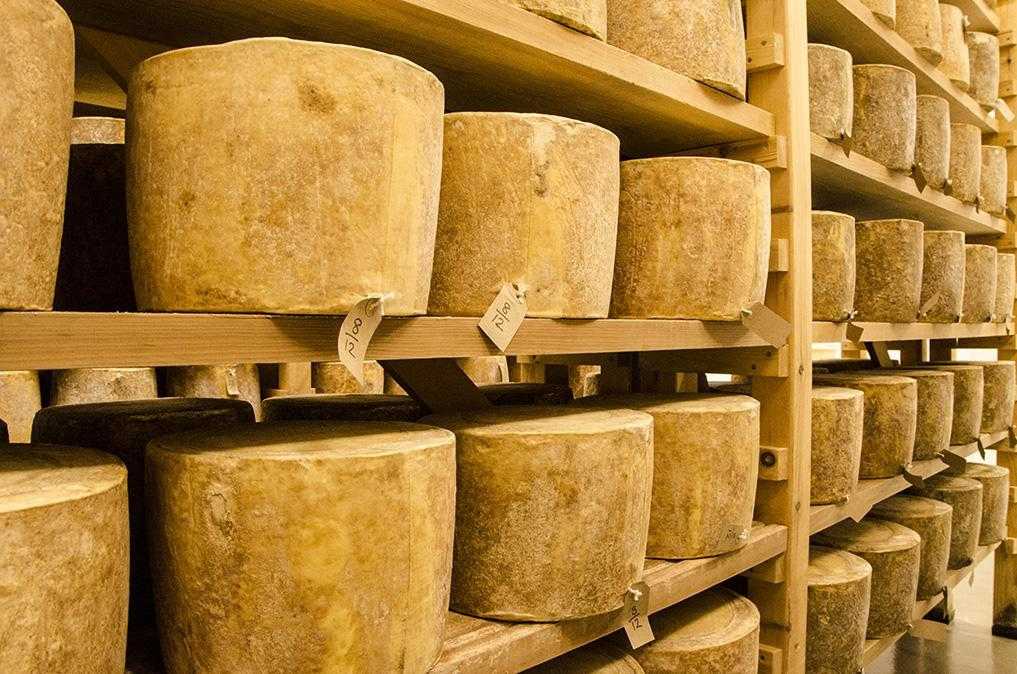
Our final British territorial alternative is Lancashire, from the county of Lancashire (surprise, surprise…). Lancashire is a cow’s milk cheese that is currently available in three variants, young Creamy Lancashire, mature Tasty Lancashire and the more commercial Crumbly Lancashire.
During maturation, Lancashire cheese develops a texture that is closer to the crumbly side of ‘buttery crumble’ and some flavours that are more upfront and punchier. You can expect a buttery, yoghurt flavour with a fluffy and light texture that melts in the mouth.
Serve chunks of Lancashire with warm Eccles cakes. Also, this cheese is an excellent addition to grilled cheese toasties.
Summary
Wensleydale cheese is a beloved cheese that has been enjoyed for centuries. Its unique flavour and crumbly texture make it a versatile cheese that can be used in a variety of dishes. Whether you enjoy it on a cheese board or in a Grilled Cheese Sandwich, this cheese will delight your taste buds.
What’s your favourite type of Wensleydale? Drop us a comment below to let us know.
